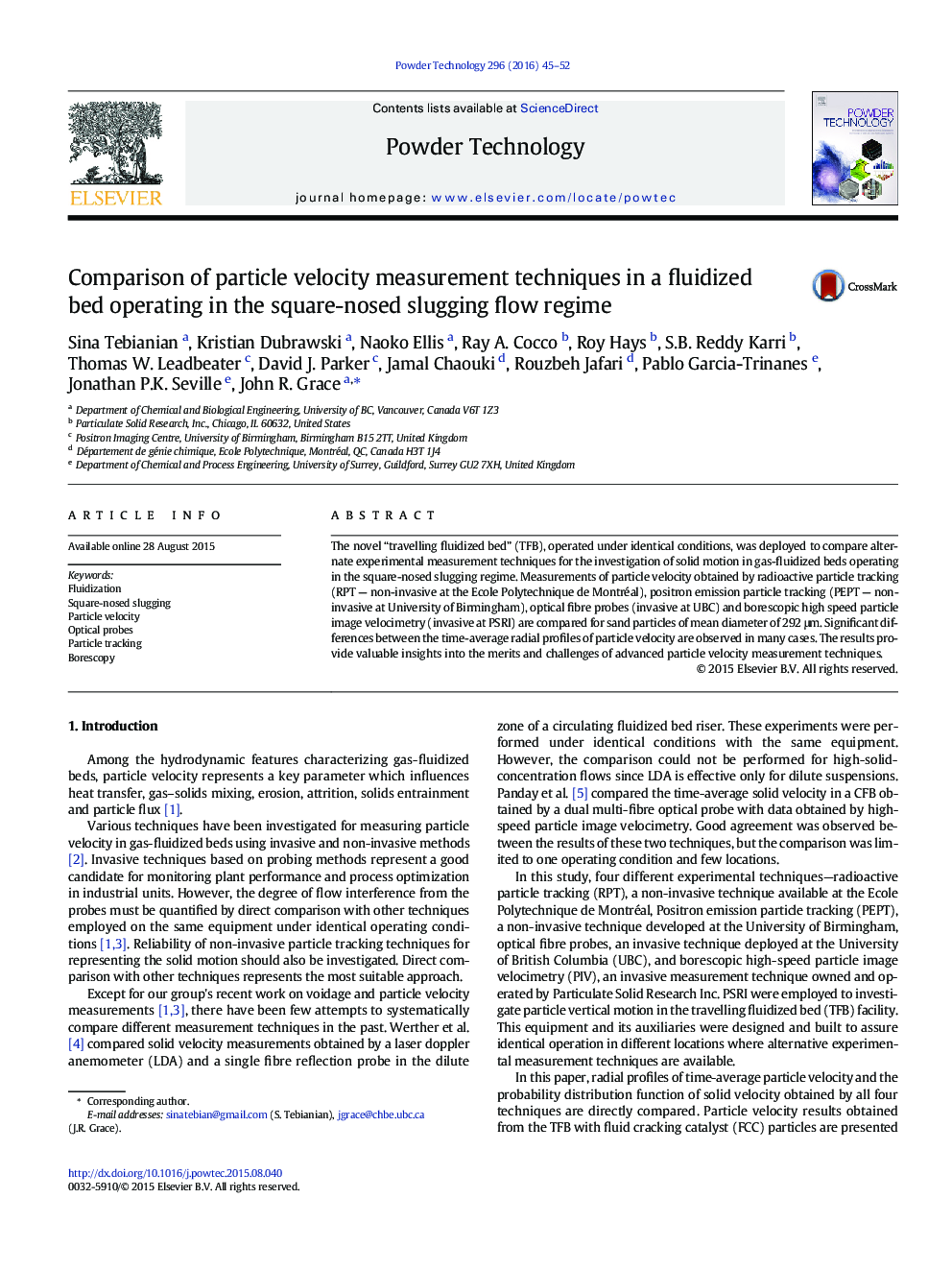| Article ID | Journal | Published Year | Pages | File Type |
|---|---|---|---|---|
| 234962 | Powder Technology | 2016 | 8 Pages |
•Identical fluidization operating conditions were achieved in different locations.•The hydrodynamics of the square-nosed slugging flow regime were investigated.•Advanced particle velocity measurement techniques give different results.•The reasons for the observed discrepancies among the results are explored.
The novel “travelling fluidized bed” (TFB), operated under identical conditions, was deployed to compare alternate experimental measurement techniques for the investigation of solid motion in gas-fluidized beds operating in the square-nosed slugging regime. Measurements of particle velocity obtained by radioactive particle tracking (RPT — non-invasive at the Ecole Polytechnique de Montréal), positron emission particle tracking (PEPT — non-invasive at University of Birmingham), optical fibre probes (invasive at UBC) and borescopic high speed particle image velocimetry (invasive at PSRI) are compared for sand particles of mean diameter of 292 μm. Significant differences between the time-average radial profiles of particle velocity are observed in many cases. The results provide valuable insights into the merits and challenges of advanced particle velocity measurement techniques.
Graphical abstractFigure optionsDownload full-size imageDownload as PowerPoint slide
